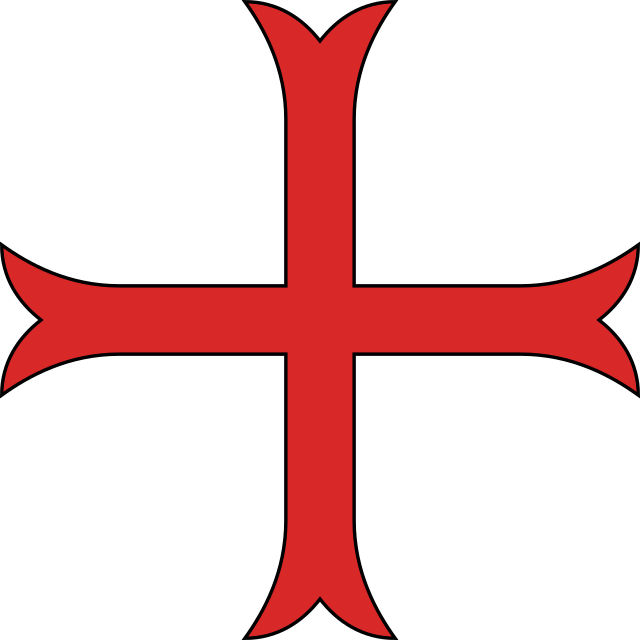Cross moline
Heraldic cross with bifurcated curved tips From Wikipedia, the free encyclopedia
The cross moline (also cross anchory, French croix ancrée "anchor cross") is a Christian cross, constituting a kind of heraldic cross.

History
The name derives from its shape, which resembles a millrind, the iron clamp of the upper millstone, moline being the Old French for a mill. It is very similar to one of the varieties of the "fer de moline" heraldic charge (literal French: "iron of a mill"), the forked tips of which, however, circle out slightly more, akin to the "cross recercelee". It is borne both inverted and rebated, and sometimes "saltirewise" (i.e. in the form of a saltire).
The cross moline is associated with St. Benedict of Nursia. As a result, it is widely used as an emblem by the monks and nuns of the Order of St. Benedict, which he founded.[1]
Examples


Crosses moline appear most notably in the arms of the following:
- Families:
- Molyneux, a mediaeval Anglo-French family, Earl of Sefton, Viscount Molyneux, Molyneux baronets, etc. A famous example of canting arms: Azure, a cross moline or (Burke's Armorials, 1884)
- the House of Broglie
- Institutions:
- Modern examples:
- Sefton Metropolitan Borough Council
- Selby District Council
- Huyton-with-Roby Urban District Council
- North Warwickshire Borough Council
- My Chemical Romance used a cross moline for MCRX.
- Club Independiente Santa Fe from Bogotá, Colombia, used a cross moline in their first badge.
Cercelée


A cross cercelée, sarcelly, or recercelée is an exaggerated cross moline, and to a lesser extent similar to the anchored cross, with its forked tips curving around both ways, like a ram's horns. The form is also called recercelée, for example by Boutell.[2][3][4] Over time, English and French heralds reinterpreted the term (sometimes even treating the various spellings as multiple words with different meanings); because many crosses sarcelly were also depicted voided, some writers later used the term to mean voided, applied it to animals to mean cut in half, or applied it to bordures meaning engrailed or indented.[5][6]
See also
References
Sources
Further reading
Wikiwand - on
Seamless Wikipedia browsing. On steroids.
